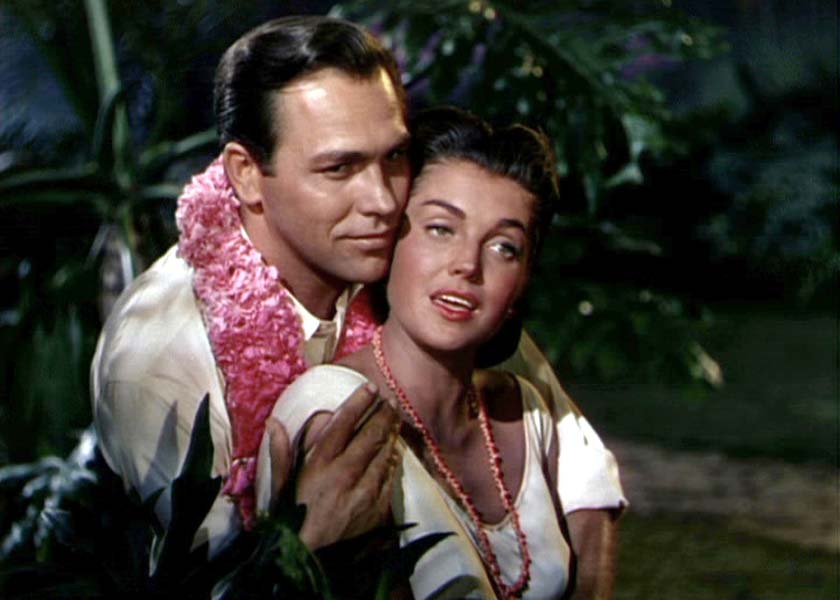Synopsis
Hazard Endicott (Keel) arrives in Tahiti to claim the plantation he has inherited from his uncle. He meets Mimi Bennett (Williams) and many native Tahitians and hires siblings Tavae (Mauu) and Terru (Moreno) to be his plantation manager and housekeeper. Following local custom, Hazard accepts three children into his house on a shared basis with their families. He and Mimi fall in love and become engaged; however, they separate after Hazard publically scolds Tavae. The copa crop has been left in the rain, and Hazard, who will not get the money to pay his debts, may have to sell the plantation. Fortunately for him, his three wards have mobilized all the local children, and they have moved the crop into the shed. Hazard apologizes to Tavae, and he and Mimi reconcile.
Discussion
Pagan Love Song was produced by Arthur Freed, who would go on to produce An American in Paris (1951), Singin' in the Rain (1952) and The Band Wagon (1953). Freed wanted a film about Tahiti based on the slice-of-life novel Tahiti Landfall, written by William S. Stone in 1946. The film was named Pagan Love Song after a well-known song Freed and Nacio Herb Brown had composed in 1929. Freed and Harry Warren composed new music for the film. Esther Williams, who was a competitive swimmer before becoming an actress, rejected direction by Stanley Donen, so Freed hired Robert Alton, a renowned dance choreographer who had directed only one previous picture.
Due to travel difficulties, filming took place on the Hawaiian island of Kauai rather than on Tahiti. Alton proved to be inexperienced, indecisive, and insecure. Filming was delayed by frequent rain, many of the accommodations were subpar, and, overall, the location shooting was wearisome for the entire cast and crew. The finished film reflects Alton’s inexperience and incompetence. Although he continued to stage and direct musical numbers until his death in 1956, Alton never directed another film.
A plot barely exists in Pagan Love Song. Most of the film consists of views of the beautiful island with or without the actors in the scene. When the actors are shown, Howard Keel has most of the screen time. He is seen at home, bicycling island roads, or romancing Williams along the picturesque shore. He looks handsome and sings the bland songs nicely. Williams has her usual underwater ballet. As a couple, they smile, acknowledge each other, and speak their lines, with little resulting chemistry. Overall, the film is one of the renowed Freed Unit's weakest productions. Nevertheless, Esther Williams had many fans, and they came out to see her. The film, which cost $1.9 million, grossed over $3.2 million.

